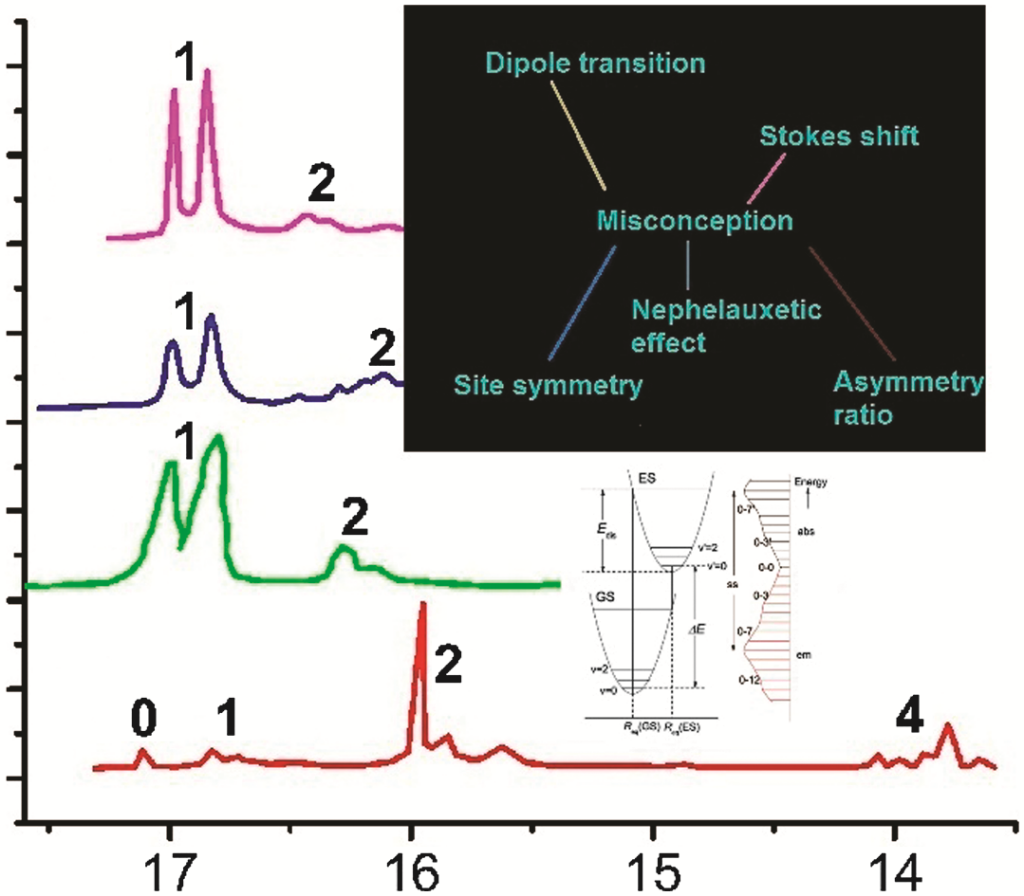Thinking about electronic spectra, spins and orbitals takes me back to my good old undergraduate days, when denim jackets worn with jeans were cool and having predictive text meant you had a top-of-the-range phone, and I would sit with my brain burning with wonder and confusion (and probably a small hangover) as these concepts and theories would be explained to me by the lecturer, affectionately nicknamed Disco Dave; so-called for the the entanglements and angles that his fingers and arms would get into, trying to explain such things. And it worked.
Well, Disco Dave may be retired now but Peter Tanner, a well-known analytical chemistry expert from the Hong Kong Institute of Education, has published a Tutorial Review in Chem Soc Rev that looks to clarify misconceptions regarding the electronic spectra of tri-positive europium and cerium. Tri-positive europium has attracted attention due to its potential application in sensors and time-gated bioimaging agents based on its optical emission spectra. Tanner’s review gives the background to the electronic states, energy levels and transition intensities of lanthanide ions, and describes how to interpret the emission spectra of tri-positive europium in the solid state.
 Professor Tanner has written this review to address, he says, the inaccurate descriptions of these spectra that are being amplified throughout the literature. One such inaccuracy is the misuse of the term ‘Stokes shift.’ (This must be the chemistry equivalent of doing ‘hip hop’ moves to the disco tune ‘Saturday Night Fever.’) The spectral properties 4fN-4fN lanthanide ions are often referred to, in the literature, to have large Stokes shifts; Professor Tanner explains that it is quite the contrary. The Stokes shifts involved in such transitions are negligible, he explains, as the vibrational progressions are very weak and the maximum intensity lies in the 0-0 band. In his Tutorial Review, we discover the alternative terms, Richardson shift and Denning shift, which are perhaps more appropriate– more consistently ‘disco.’
Professor Tanner has written this review to address, he says, the inaccurate descriptions of these spectra that are being amplified throughout the literature. One such inaccuracy is the misuse of the term ‘Stokes shift.’ (This must be the chemistry equivalent of doing ‘hip hop’ moves to the disco tune ‘Saturday Night Fever.’) The spectral properties 4fN-4fN lanthanide ions are often referred to, in the literature, to have large Stokes shifts; Professor Tanner explains that it is quite the contrary. The Stokes shifts involved in such transitions are negligible, he explains, as the vibrational progressions are very weak and the maximum intensity lies in the 0-0 band. In his Tutorial Review, we discover the alternative terms, Richardson shift and Denning shift, which are perhaps more appropriate– more consistently ‘disco.’
Read this HOT Chem Soc Rev Tutorial Review to find out more!
Some misconceptions concerning the electronic spectra of tri-positive europium and cerium
Peter A. Tanner
Chem. Soc. Rev., 2013, Advance Article
DOI: 10.1039/C3CS60033E
Sarah Brown is a guest web-writer for Chem Soc Rev. Sarah hung up her lab coat after finishing her PhD and post-doctorate in nanotechnology for diagnostics and therapeutics, to become an assistant editor at the BMJ Publishing Group. When not trying to explain science through ridiculous analogies, you can often find her crocheting, baking or climbing, but not all at once.










